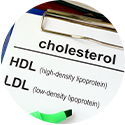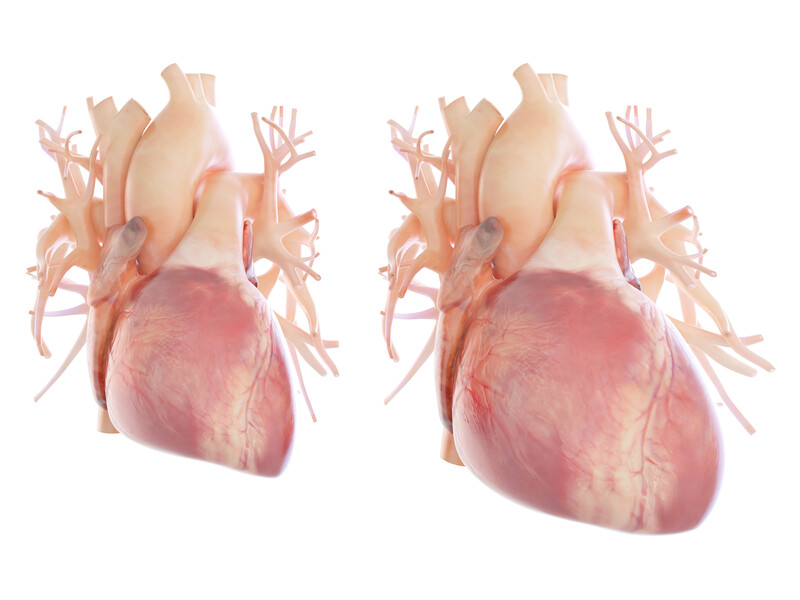Over the last few years, the Magazine Center for Wellness has participated in research surrounding the use of EDTA chelation for patients with cardiovascular problems. These problems include past heart attacks and advanced coronary disease which may make the patient physically ineligible for cardiovascular surgery. EDTA Chelation therapy has also been and is being examined as an option for patients who do not want to undergo cardiac surgical procedures.
Chelation involves the intravenous infusion of vitamins, magnesium and a chelating agent, ethylene diamine tetra-acetic acid (EDTA).
This mixture serves to chelate, or bind, toxic heavy metals, calcium and free radicals in blood vessel walls, which are then excreted in the urine. As a result, blood vessels become more pliable and circulation improves, which leads to the reduction or elimination of chest pain and other symptoms of vascular disease. Patients who have completed a course of chelation therapy often notice an improvement in energy and well-being, and are often able to reduce or eliminate their need for medication.
We have offered this treatment for more than 30 years. In 2012 the Magaziner Center for Wellness was chosen to participate in a study through the National Institutes of Health to test the effectiveness of EDTA chelation in patients suffering from heart disease. The study was called TACT, The Trial to Assess Chelation Therapy.(1)
In this article we will examine a portion of the findings of this study and other research that examines the role of toxic/heavy metals in accelerating and causing the problems of heart disease.
Heavy Metals May Pose Health Risk – Toxic metal cardiology
There is a new awareness of the role of toxic metals in the management of heart disease. We call this “toxic metal cardiology.” If you need proof, look at the recent amount of research.
In May 2021 in The American journal of the medical sciences (2) researchers suggested the following:
“Exposure to cadmium and lead is widespread, and is related to environmental contamination, occupational sources, food, tobacco and other consumer products. Lower socioeconomic status increases the risk of heavy metal exposure and the diseases associated with cadmium and lead toxicity.
Concurrent toxicity with both cadmium and lead is likely but has not often been assessed. There is now substantial evidence linking cadmium and lead to many diseases including hypertension, diabetes mellitus, obesity, cancer, coronary artery disease, chronic kidney disease and lung disease. Both chronic renal failure and ischemic heart disease patients have been treated separately in recent studies with calcium disodium ethylenediaminetetraacetic acid (Ca EDTA) chelation therapy. In patients with chronic kidney disease, serum creatinine 1.5-4.0 mg/dL, and increased body lead burden, weekly low dose chelation with Ca EDTA slowed the rate of decline in renal function in diabetics and non-diabetics. In patients with a history of myocardial infarction, the Trial to Assess Chelation Therapy (TACT) study showed that Ca EDTA chelation decreased the likelihood of cardiovascular events, particularly in diabetics. Ca EDTA chelation administered carefully at lower dosage is generally safe.”
“Metal contamination even at levels previously considered safe in humans may be a potential risk factor for atherosclerosis”
A June 2021 paper in Toxicological Sciences (3) adds to this line of research by suggesting: “In spite of cardiovascular prevention, there is residual risk not explicable by traditional risk factors. Metal contamination even at levels previously considered safe in humans may be a potential risk factor for atherosclerosis. This (study) examines evidence that 2 metals, lead, and cadmium, demonstrate sufficient toxicological and epidemiologic evidence to attribute causality for atherosclerotic disease.
Basic science suggests that both metals have profound adverse effects on the human cardiovascular system, resulting in endothelial dysfunction, an increase in inflammatory markers, and reactive oxygen species, all of which are proatherosclerotic (leading to leads to atherosclerosis). . . studies have shown both metals to have an association with cardiovascular disease, such as peripheral arterial disease, ischemic heart disease, and cardiovascular mortality.
This study also examined edetate disodium-based chelation as a possible pharmacotherapy to reduce metal burden in patients with a history of cardiovascular disease and thus potentially reduce cardiovascular events. One finding suggested: “. . . patients with diabetes may be particularly well-suited to the antioxidant effect of edetate disodium chelation of lead and cadmium.”
November 2020 – A study published in the medical journal Cureus (4) made an association between lead, cardiovascular disease, and its treatment with EDTA Chelation.
“Chronic exposure to and the accumulation of lead has been associated with cardiovascular and all-cause morbidity and mortality. It has also been associated with accelerated declines in cognitive function and has been theorized as a contributor to essential hypertension. This study demonstrates the capacity of intermittent infusions of calcium ethylenediaminetetraacetic acid (EDTA) to reduce the amount of lead measured by provocative urinary testing, which is considered a marker for total body lead stores.
Since lead is a known toxic substance with no safe levels, reducing the amount of accumulated lead in an individual has the possibility of decreasing the risk of heart disease, dementia, and other chronic illnesses associated with lead exposure.
This study population was 15 healthy, asymptomatic patients who were evaluated for accumulated total body lead stores as part of a routine health screening. Total body lead was estimated by measuring urinary output after the patients had received intravenous (IV) calcium EDTA as a chelating agent.
After establishing their baseline stored lead levels, patients received a series of intravenous chelation infusions to reduce body lead. The average number of infusions given was 14, over an average period of 24 months. After the series of chelations, there was an average reduction in the lead of 39.16% (range of 16% to 40%). All 15 subjects had a reduction in the amount of excreted lead after the series of chelation infusions.”
November 2018 – Olajide Buhari, MD, internal medicine resident at Jacobi Medical Center in New York and his colleagues released findings at the 2018 American Heart Association Scientific Sessions (5) that adults with high levels of lead and other heavy metals in their blood had greater odds of having high LDL or total cholesterol. The research team also found that those with higher mercury exposure had higher odds of elevated total cholesterol.
“These findings reinforce the importance of environmental toxic metals in cardiovascular risk”
August 2018 – Doctors at the Department of Public Health and Primary Care, University of Cambridge published research in the British Medical Journal (6) that found: “Exposure to arsenic, lead, cadmium, and copper is associated with an increased risk of cardiovascular disease and coronary heart disease. Mercury is not associated with cardiovascular risk. These findings reinforce the importance of environmental toxic metals in cardiovascular risk, beyond the roles of conventional behavioral risk factors.” (There is controversy, as presented in other studies as to the exact role of mercury in cardiovascular risk. One of the controversies surrounds the amounts of mercury present in seafood. As pointed out in an editorial response (7) to this research which we will also cite below: “Methylmercury contamination of fish is the primary source of mercury in most populations and these null results must be interpreted carefully.”)
May 2019 – A study lead by Columbia University in New York (8) examined arsenic exposure and its possible relationship to numerous adverse cardiovascular outcomes. The researchers here investigated the association between arsenic exposure and left ventricular function. (That portion of your heart that pumps the blood to the rest of your body). What you may find interesting is that the group they tested were young American Indians with a low burden of cardiovascular risk factors. Here are the concerning results:
“Arsenic exposure was related to an increase in left ventricle wall thickness and left ventricle hypertrophy in young American Indians with a low burden of cardiovascular risk factors. The relationship was stronger in participants with prehypertension or hypertension, suggesting that potential cardiotoxic effects of arsenic might be more pronounced in individuals already undergoing cardiovascular adaptive mechanisms (treatments) following elevated systemic blood pressure.”
December 2019 – A Swedish study in the journal Environmental health perspectives (9) suggests doctors look at the role of lead exposure and increased incidence of adverse clinical cardiovascular outcomes. In this study, the researchers were able to demonstrate an association between environmental lead exposure based on blood lead concentrations and the prevalence of atherosclerotic plaque in the carotid artery.
How do these metals get in your blood?
As mentioned above, an editorial in the August 29, 2018 edition of the British Medical Journal (10) suggests:
“Exposure to environmental metals remains substantial because of widespread soil contamination; persistence of past uses (house paint and plumbing for lead); continuing industrial uses (plastics and batteries); and presence in tobacco and tobacco smoke, drinking water and ambient air, and dust near industrial sources and waste sites.
Cadmium content in fertilizers provide an additional exposure pathway through diet and tobacco since vegetables and grains bioconcentrate cadmium.
Emerging tobacco products such as electronic cigarettes also increase metal exposure. The main source of metals in electronic cigarettes seems to be the heating coil, from where metals leach into the inhaled aerosol.”
Adding to the problem is that we are surrounded by everyday chemicals and personal-care products in which heavy metals are present.
Is an enlarged heart the problem of toxic metals?
September 2018 – In the medical journal Clinic Toxicology (11), Philippe Hantson, MD, Ph.D., published his findings on toxic metals and their possible impact on Dilated cardiomyopathy (an enlarged heart). Dr. Hantson suggests that enlarged heart is a frequent disease responsible for 40-50% of cases of heart failure. Idiopathic cardiomyopathy (heart disease that does not have a definitive cause, no history of high cholesterol, hypertension or other risk factors) maybe caused by various factors related to toxic causes including metals. He suggested:
Cobalt-related cardiomyopathy probably results from interference with energy production and contractile (the ability of the heart to contract) mechanisms, but additional factors (nutrition, hypothyroidism) are often required.
Antimony a metal frequently used as an alloy in tin and lead may cause lethal oxidative stress and cell death mediated by elevation in intra-cellular calcium.
Proposed mechanisms for mercury toxicity include glutathione depletion. Glutathione depletion has been linked to heart failure progression. Production of reactive oxygen species and its impact on mutation and toxic damage to DNA, and interruption in selenium-dependent endogenous enzymatic reactions, (a valuable anti-oxidant resource).
Dr. Hantson concluded that the mechanisms behind toxic cardiomyopathy are complex and multifactorial but include interference with myocardial cell bioenergetics and intracellular calcium handling, the generation of ROS (see below), neurohormonal stress (Ventricular failure that result in vasoconstriction,) and induction of apoptosis (heart cell death).
The TACT (The Trial to Assess Chelation Therapy) findings on heavy metals.
In August 2018, TACT researchers lead by Gervasio A. Lamas, MD of Columbia University Division of Cardiology at Mount Sinai Medical Center, Miami Beach, (11) found that while essential metals are crucial in maintaining cellular homeostasis (the balance that allows cells to function normally), excessive exposure may lead to metal-induced toxicity by increasing production of reactive oxygen species (ROS).
ROS is a complicated actor in our immune system that science has spent generations trying to understand. ROS is a mild mannered chemical compound that goes about its business sending chemical signals that helps cells maintain its homeostasis. However, ROS is also our immune system’s hired assassin, it is a killer of cells that ROS finds threatening to the normal balance of cellular life. When toxic metals are present, ROS can “overdeploy,”and overwhelm and deplete the cell’s intrinsic antioxidant defenses leading to oxidative stress. This leads to an inflammatory response implicated in cardiovascular disease.
The TACT study, in part, isolated on Iron and copper, the two best-known metals that have the potential of generating ROS and noted that EDTA chelation can be effective in chelating excessive amounts of these metals out of the body.
Other metals, the TACT study noted, referred to as xenobiotic (foreign) or toxic metals, have no role in human physiology (we don’t need them in us) and, like lead, may be toxic even in dilute concentrations. Some of the most commonly found toxic metals in humans include lead, cadmium, arsenic, and mercury, all of which cause – or at the very least are associated with – cardiovascular disease.
Is chelation and nutritional therapies a possible treatment for problems of an enlarged heart?
At the Magaziner Center for Wellness we utilize an extremely thorough and unique set of blood and urine tests, for patients suspected of heavy metal problems. Taking into account all contributing factors, lifestyle, nutritional status, environmental factors, detoxification pathways and more, we develop a unique treatment plan for each patient, using safe and non-invasive methods such as chelation therapy and nutritional supplementation.
If you would like to explore more information, please contact our office so we can start a conversation with you.
Related articles
TACT 2 EDTA CHELATION STUDY – Patient recruitment
Is an Enlarged Heart a Problem of Toxic Metal Exposure?
Subclinical Hypothyroidism and Heart Health
Does Inflammation Cause Breast Cancer? Can Stress Management Stop The Spread?
References
1 Lamas GA, Goertz C, Boineau R, et al. Design of the Trial to Assess Chelation Therapy (TACT). Am Heart J. 2012;163(1):7-12.
2 Glicklich D, Frishman WH. The Case for Cadmium and Lead Heavy Metal Screening. The American Journal of the Medical Sciences. 2021 May 25.
3 Ujueta F, Navas-Acien A, Mann KK, Prashad R, Lamas GA. Low-Level Metal Contamination and Chelation in Cardiovascular Disease—A Ripe Area for Toxicology Research. Toxicological Sciences. 2021 Jun;181(2):135-47.
4 Petteruti S. Reduction of Lead Levels in Patients Following a Long-Term, Intermittent Calcium Ethylenediaminetetraacetic Acid (EDTA)-Based Intravenous Chelation Infusions: A Prospective Experimental Cohort. Cureus. 2020 Nov;12(11).
5 Buhari O, et al. Poster Mo1196. Presented at: American Heart Association Scientific Sessions; Nov. 10-12, 2018; Chicago.
6 Chowdhury R, Ramond A, O’Keeffe LM, Shahzad S, Kunutsor SK, Muka T, Gregson J, Willeit P, Warnakula S, Khan H, Chowdhury S. Environmental toxic metal contaminants and risk of cardiovascular disease: systematic review and meta-analysis. bmj. 2018 Aug 29;362:k3310.
7 Tellez-Plaza M 1, Guallar E 2, Navas-Acien A 3. Environmental metals and cardiovascular disease. BMJ. 2018 Aug 29;362:k3435. doi: 10.1136/bmj.k3435. PMID: 30158104; PMCID: PMC6283369.
8 Pichler G, Grau-Perez M, Tellez-Plaza M, Umans J, Best L, Cole S, Goessler W, Francesconi K, Newman J, Redon J, Devereux R, Navas-Acien A. Association of Arsenic Exposure With Cardiac Geometry and Left Ventricular Function in Young Adults. Circ Cardiovasc Imaging. 2019 May;12(5):e009018. doi: 10.1161/CIRCIMAGING.119.009018. PMID: 31060373; PMCID: PMC6668025.
9 Harari F, Barregard L, Östling G, Sallsten G, Hedblad B, Forsgard N, Borné Y, Fagerberg B, Engström G. Blood Lead Levels and Risk of Atherosclerosis in the Carotid Artery: Results from a Swedish Cohort. Environ Health Perspect. 2019 Dec;127(12):127002. doi: 10.1289/EHP5057. Epub 2019 Dec 6. PMID: 31808705; PMCID: PMC6957277.
10 Tellez-Plaza M 1, Guallar E 2, Navas-Acien A 3. Environmental metals and cardiovascular disease. BMJ. 2018 Aug 29;362:k3435. doi: 10.1136/bmj.k3435. PMID: 30158104; PMCID: PMC6283369.
11 Hantson P. Mechanisms of toxic cardiomyopathy. Clinical Toxicology. 2018 Sep 23:1-9.
12 Diaz D, Fonseca V, Aude YW, Lamas GA. Chelation therapy to prevent diabetes-associated cardiovascular events. Curr Opin Endocrinol Diabetes Obes. 2018;25(4):258-266.





































Recent Comments